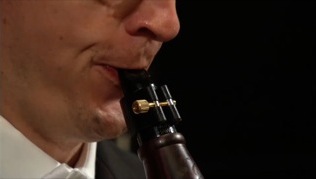 Play
Play

“Even as a child I was struck by birdsong.”
Calls of various birds, real and invented, permeate Mahler’s musical world.

“Even as a child I was struck by birdsong.”
Calls of various birds, real and invented, permeate Mahler’s musical world.
Why does Mahler change the call of the cuckoo?
Compare a call of the common cuckoo (Cuculus canorus, 2011)
with its depiction in a harpischord piece (Daquin, 1720)
with the bird cadenza in the Pastoral Symphony (Beethoven, 1806)
with this folk song (Austria, before 1900)
and finally with Mahler’s repeated call in the First Symphony (1887)
Privacy Policy | Terms of Use | SFSymphony.org | SFSkids.org | Contact Us
© 2011 San Francisco Symphony. All rights reserved. Keeping Score® is a registered trademark of the San Francisco Symphony.